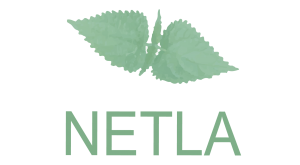“I use all the free hours I have”: Internet use by Icelandic adolescents and parental restrictions of their use
Keywords:
internet use, internet addiction, parental restrictions, adolescentsAbstract
During the last decades internet use has increased significantly and constitutes the norm in daily life for most people, especially for adolescents. Recent technical advances have shifted the ability to access the internet from using a desktop computer to being able to access the internet anywhere and anytime by a wireless connection. Adolescence is a period involving substantial physical, cognitive and socio-emotional growth. During this period, the adolescent’s self-image strengthens and inner and outer boundaries are explored, they expand their social networks and spend more time and experience greater intimacy with friends while interactions with their families may be reduced. Adolescents’ everyday life is to a great extent controlled by what can be done online, they communicate and interact socially online, read blogs, browse the internet for knowledge and information, download music and movies. Some find online communication more comfortable than face-to-face interaction, in particular when sharing information pertaining to them. The internet also allows adolescents to connect to friends and relatives living far away. Although most adolescents regard the internet as a necessity in their everyday life, it may also present harm including exposure to sexually explicit content, violence or cyber bullying. Internet use can also become excessive and addictive. A sign of internet addiction has been described as similar to those of addictive gambling. Symptoms include feelings of conflicts of whether spending time online or seeing friends, or attending a sports practice and users gradually withdraw from social interactions outside of the internet. Other signs involve obsessive thoughts about being Online, irritation when online sessions are being interrupted or not possible and some individuals try to conceal the full extent of their internet use. This paper explores online habits and parental restrictions on internet use among 15–16 years old adolescents in Iceland. The paper builds on data from the EU-NET Addiction Behaviour project (EUNET-ADB). The aim of the EUNET-ADB was to measure prevalence and risk factors for internet addictive behaviours among adolescents in Europe. Data in the EUNET-ADB project was collected by a mix method approach, using a questionnaire and semistructured individual interviews with adolescent scoring 30 points or more on the Internet Addiction Test (IAT) instrument. In this paper we examine how much time adolescents spend online on weekdays and weekends. We also assessed adolescent´s view on their parents´ restrictive measures with respect to their children´s internet use. The results indicate that most adolescents in Iceland use the internet and 2 out of 3 use the internet during most days. Boys stay online to a greater extent than girls, on average two and a half hour per day compared to 2 hours per day among girls. About 1 of 3 respondents reported having used the internet excessively so that other activities had been neglected. Many participants said to have tried to reduce time spent online. Parental mediation of internet use was limited. Freedom of visiting any website of their choice was reported by 67% of respondents. Similarly, almost 60% of adolescents reported that parents never or rarely set any restrictions on how long they were allowed to be online. All of the adolescents that participated in the in-depth interviews were avid internet users and most of them also engaged in social networking, in particular by Facebook. Being active on Facebook was vividly described by participants as necessary to keep up with what was happening. Although data based the quantitative study indicated that parental mediation of internet use was limited, most participants in the in-depth interviews described various strategies parents had implemented to limit time spent online or access to certain websites, such as computer-free days, password protected access or so called “net-nannies”. The participants in the in-depth interviews generally regarded themselves as being in control of their internet use, although many disclosed that their online time was more than they considered “normal”. Boredom, loneliness or escaping from reality was often related with a heavy internet use in adolescent’s narrations.Downloads
Download data is not yet available.

